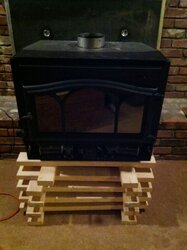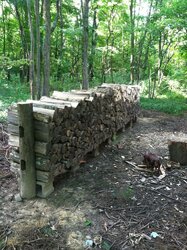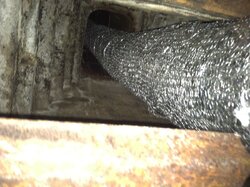Just got an email saying my liner and cap have been delivered. I will check it out when I get home, but hopefully everything fits. I got my insulation kit and top plate yesterday. Thanks to everyone for your help and contributing to this great resource. Just two weeks ago I knew next to nothing about fireplace inserts and now I'm going to have a go at installing one.
Last minute questions:
Last minute questions:
- The stove cement I ordered to seal the liner to appliance adapter connection has not arrived yet. Will it be o.k. to have a few small fires without sealing this joint? When I removed the insert from the previous owner's fireplace, there was not cement at this joint so I assume it will be fine with maybe a little smoke leakage.
- The previous owner's liner was connected to the adapter using rivets. The 550 manual says to use screws. Which method do you recommend?




